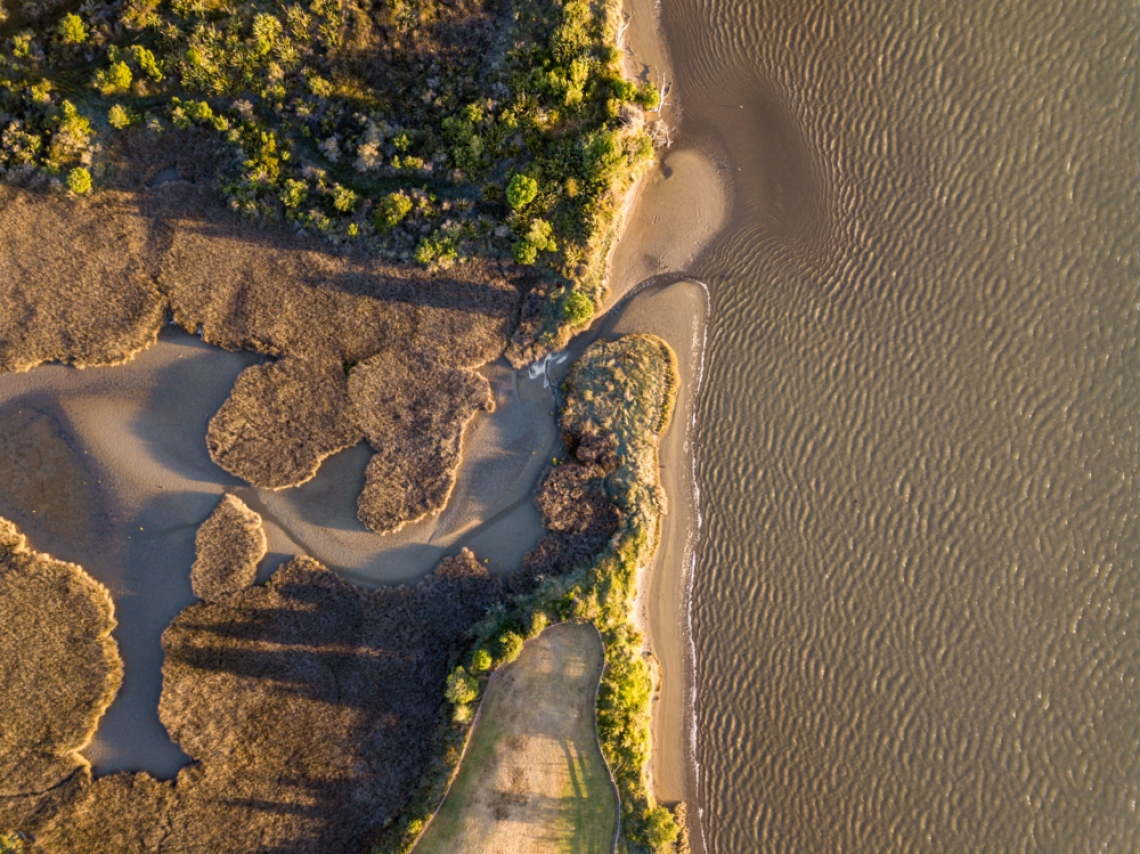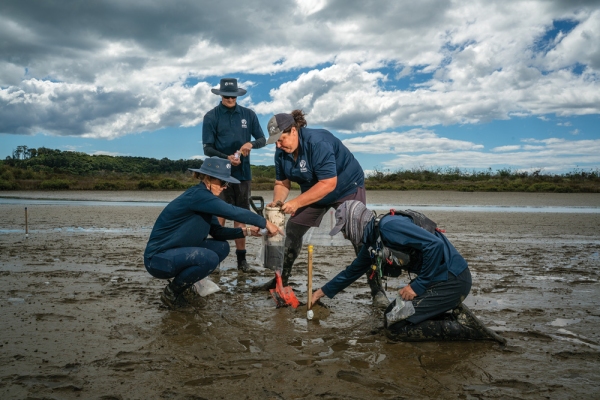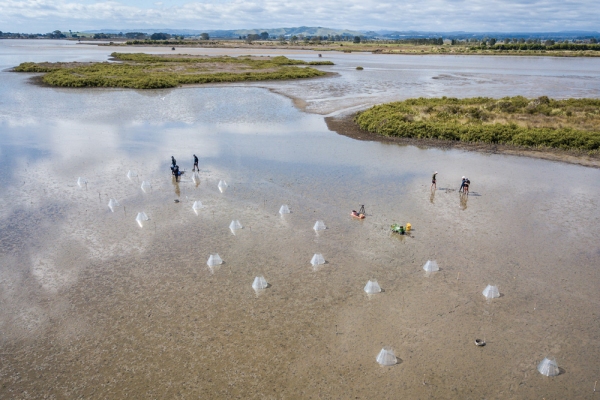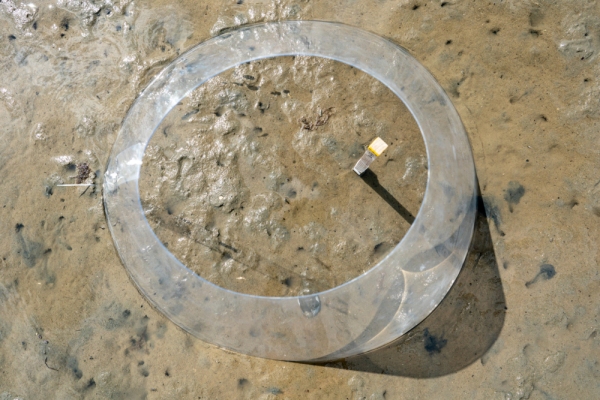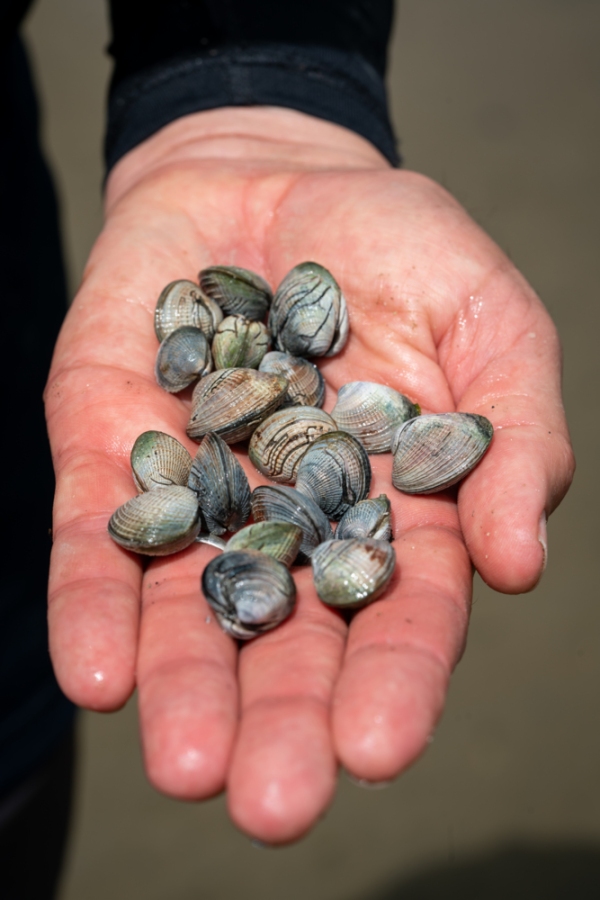In the world of marine science, estuaries are known as the lungs of the sea, and the plants and creatures they contain are integral to keeping them clear, healthy and sandy.
Many of our taonga species also live on the rocky shores and sandy bottoms of shallow coastal bays.
NIWA marine ecologists are working to understand both the impact of rising water temperatures on these important habitats, and what that may mean for wider sectors such as aquaculture or fisheries.
Programme leader Dr Vonda Cummings says ocean sea-surface temperatures are closely monitored, however the impacts of higher temperatures in tidal estuaries and shallow coastal bays is less understood.
“These areas can experience greater heat extremes, and we want to understand the impact this has on aquaculture and fisheries – including taonga species such as crayfish, pāua, mussels and other shellfish.
“If you’re putting out juvenile shellfish in a reseeding effort, and there’s a heat wave coming, then data can avoid exposing them to temperature shock,” Cummings explains.
One target for the wider research programme is the Waihī Estuary in the Bay of Plenty, where a NIWA field team recently started investigations.
The team set up experiments to simulate warming and measure the impact on estuary life, as well as gather greenhouse gas emissions data.
“Estuaries are very, very important. There’s an abundance of life, small highways of activity that all play a crucial role,” says NIWA marine technician Sarah Hailes.
“The inhabitants circulate the nutrients, and all contribute to the health of the ecosystem.”
The research has the backing of local iwi who are concerned about the estuary’s degradation. Ngāti Whakahemo, Ngāti Whakaue ki Maketū, Ngāti Mākino, Ngāti Pikiao and Tapuika will utilise NIWA’s research alongside their own restoration efforts.
Dr Drew Lohrer, NIWA Coasts & Estuaries Strategy Manager, says the estuary’s health has decreased over the decades.
“There’s been something like 70% loss of seagrass over the last 70 years. Iwi realise that some of the land use has affected the estuary, and also they’re increasingly concerned with climate change and the loss of kaimoana.”
Over seven days, the marine ecologists used open-top chambers, which look like mini-greenhouses, to warm the air and sediment within them to simulate what might happen as temperatures rise.
The team set up two sites, each with 20 chambers, 300m apart. But the two sites were quite different: one was muddy and degraded; the other, on a sandy surface, was much healthier.
“Understanding how warming affects marine species will help us manage them in the future," says NIWA ecologist Dr Emily Douglas.
Tuangi (cockles) were the main focus of this experiment, but wedge shells were also collected. In addition, the team took sediment core samples to collect the polychaetes (worms), sand hoppers, crabs and other small organisms that live buried in the sand and mud.
They also measured greenhouse gas emissions (methane and carbon dioxide) from the sediment, both within and outside of the glasshouses, using a portable gas analyser.
“We don’t really understand the role of the shallow estuary ecosystems in the carbon cycle, so we don’t actually know whether they’re absorbing or emitting greenhouse gases,” says Douglas.
Investigations into the impacts on the macrofauna are still underway, but results from the greenhouse gas measurements show the healthier sandy site absorbed more carbon dioxide. The muddier site also had greater methane emissions.
“These results support the need to prevent sedimentation of estuaries and the restoration of degraded sites,” she says.

